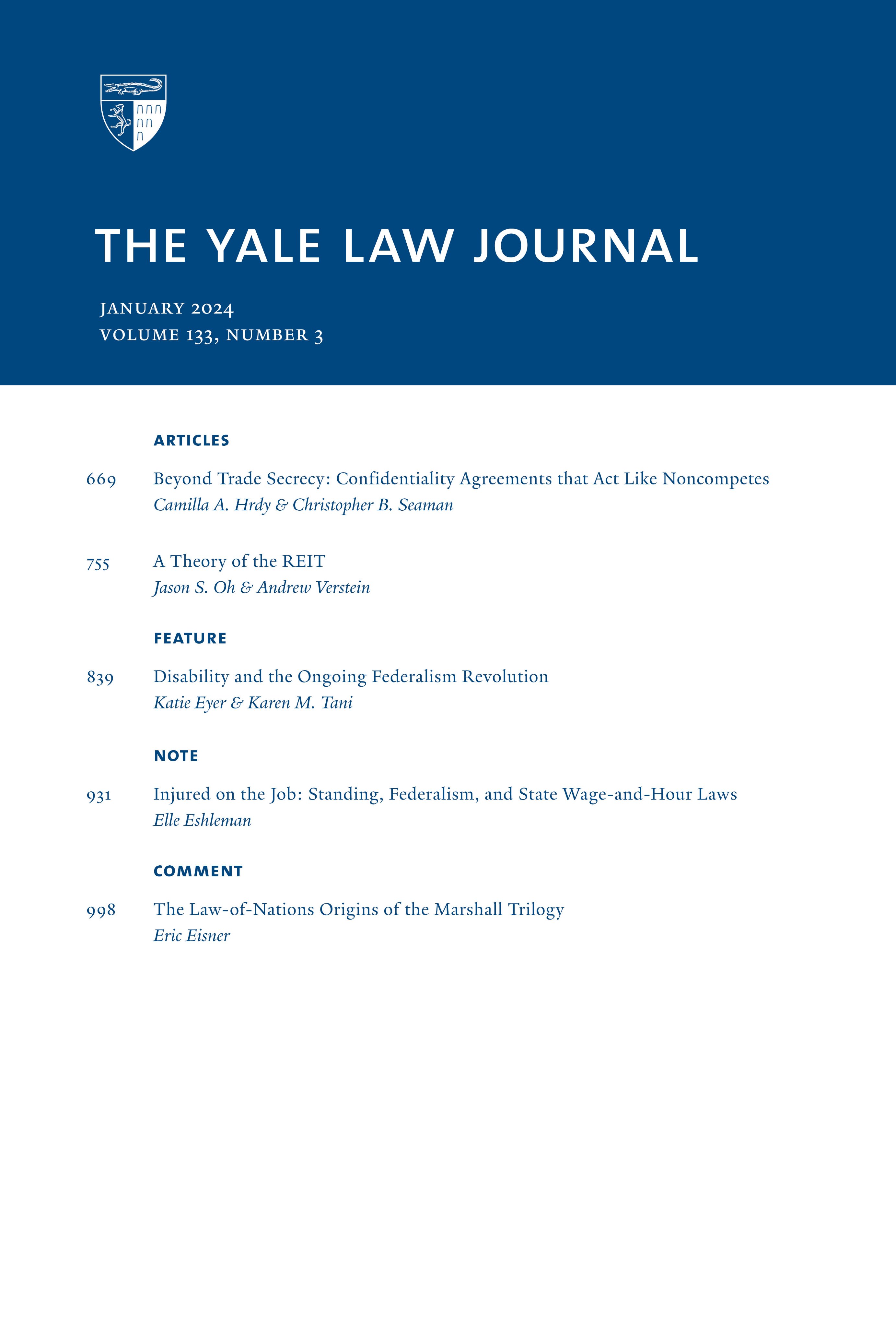发现逮捕令:干预警察行为和可预见性
IF 5.2
1区 社会学
Q1 LAW
引用次数: 0
摘要
2001年7月8日,在佛罗里达州的湖公园,安东尼·弗里尔森坐在他的1981年普利茅斯轿车上,在老迪克西高速公路上等待绿灯。一旦绿色的转向箭头出现,他没有打信号灯就左转了。尽管不打信号就转弯并不违反佛罗里达州的交通法规,但警官史蒂文·米勒(Steven Miller)看到弗莱尔森在转弯,并非法将他拦下当被问到这个问题时,弗莱尔森向警察提供了他的执照,米勒用它来检查搜查令。检查结果显示弗莱尔森因未出席交通法庭而被逮捕。根据该搜查令,米勒警官逮捕了弗莱尔森并对其进行了搜查。那次搜查发现了一把非法枪支,弗莱尔森因此受到指控,后来被定罪。在州诉弗莱尔森案中,佛罗里达州最高法院维持原判,允许将枪支作为证据。法院的理由是,“未执行的逮捕令是一项司法命令,指示在被告被找到的任何时候逮捕被告”,因此“搜查是针对未执行的逮捕令而不是针对非法拦截的”。尽管这次毫无疑义的交通拦截违反了联邦宪法本文章由计算机程序翻译,如有差异,请以英文原文为准。
Discovering Arrest Warrants: Intervening Police Conduct and Foreseeability
On July 8, 2001 in Lake Park, Florida, Anthony Frierson was sitting in his .1981 Plymouth sedan on Old Dixie Highway waiting for the light to turn green. Once the green turn arrow appeared, he turned left without using his signal. Although turning without a signal does not violate Florida traffic laws,' Officer Steven Miller observed Frierson making the turn and pulled him over illegally.2 When asked, Frierson provided the officer with his license, which Miller used to run a warrants check. The check revealed an outstanding warrant for Frierson's arrest for failure to appear in traffic court. On the basis of that warrant, Officer Miller arrested Frierson and conducted a search incident to arrest. That search revealed an illegal firearm, for which Frierson was charged and later convicted. 3 In State v. Frierson, the Florida Supreme Court upheld the conviction, permitting entry of the firearm into evidence. The court reasoned that "the outstanding arrest warrant was a judicial order directing the arrest of respondent whenever the respondent was located," and thus "the search was incident to the outstanding warrant and not incident to the illegal stop."4 Although the suspicionless traffic stop violated the Federal Constitution, the
求助全文
通过发布文献求助,成功后即可免费获取论文全文。
去求助
来源期刊

Yale Law Journal
LAW-
CiteScore
4.50
自引率
6.20%
发文量
0
期刊介绍:
The Yale Law Journal Online is the online companion to The Yale Law Journal. It replaces The Pocket Part, which was the first such companion to be published by a leading law review. YLJ Online will continue The Pocket Part"s mission of augmenting the scholarship printed in The Yale Law Journal by providing original Essays, legal commentaries, responses to articles printed in the Journal, podcast and iTunes University recordings of various pieces, and other works by both established and emerging academics and practitioners.
 求助内容:
求助内容: 应助结果提醒方式:
应助结果提醒方式:


